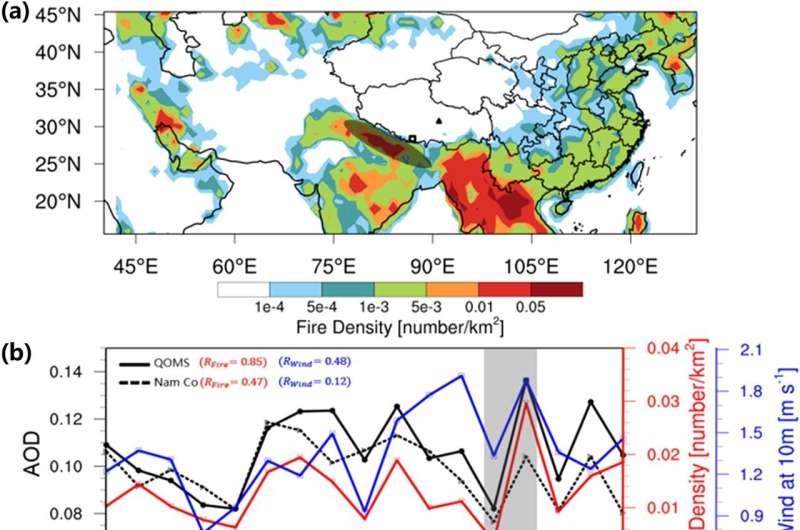This article has been reviewed according to Science X's editorial process and policies. Editors have highlighted the following attributes while ensuring the content's credibility:
fact-checked
trusted source
proofread
Rainfall's impact on pollutants: Unraveling the Tibetan Plateau's enigmatic dance

A research team led by Prof. Zhao Chun from the University of Science and Technology of China (USTC) of the Chinese Academy of Sciences (CAS) revealed the influence of rainfall on the inter-annual variation of pollutants over the Tibetan Plateau. The study was published in npj Climate and Atmospheric Science.
The Tibetan Plateau has a far-reaching impact on the world's climate. As one of the most climate-sensitive regions around the world, it is strongly affected by aerosols imported from adjacent regions. However, the mechanism behind the significant inter-annual variation has not been completely understood.
The researchers, using the WRF-Chem model developed by USTC and through comprehensive comparisons, revealed the impact of meteorological factors on the inter-annual variation of pollutants on the Tibetan Plateau.
Based on the simulation results, they found that under consistent meteorological conditions, years with high combustion emissions in South Asia would have higher atmospheric optical thickness, and under the same discharge conditions, years with weak precipitation and strong total wind speed would exhibit higher concentrations of plateau pollutants.
This phenomenon occurs because the vast terrain of the plateau, coupled with stronger surface wind speeds and weak south wind, reduces the orographic rain in the combustion source region of South Asia. The decrease in rainfall increases the frequency of fires and contributes to their spread, intensifying combustion emissions. Rainfall reduces pollutants in the air through wet sedimentation, therefore a reduction in rainfall leads to higher pollutant concentrations. Due to the key role of the south wind in the cross-border transmission of South Asia, the contribution of this transmission process to plateau pollutants is weakened as well.
This study emphasizes the necessity of mechanism analysis and numerical simulation of causality in the case of complex mixed effects of multiple factors, and it highlights the co-variability of wind and rainfall and their confounding impacts on aerosols in the southern Himalayas and over the Tibetan Plateau.
More information: Weichen Liu et al, Southern Himalayas rainfall as a key driver of interannual variation of pre-monsoon aerosols over the Tibetan Plateau, npj Climate and Atmospheric Science (2023). DOI: 10.1038/s41612-023-00392-5
Provided by Chinese Academy of Sciences




















